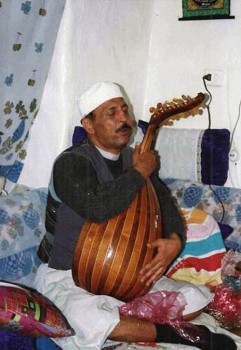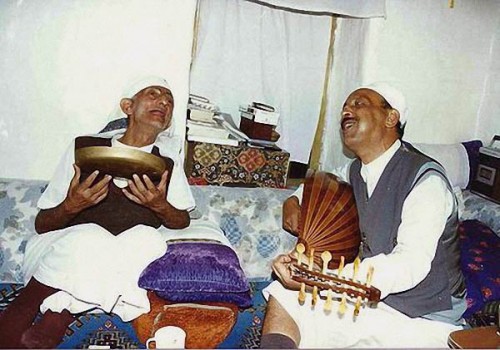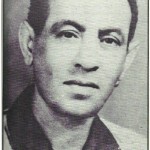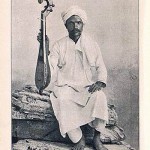The Arab Music Archiving and Research foundation (AMAR), in collaboration with the Sharjah Art Foundation (SAF), presents “Durūb al-Nagham”.
Dear listeners,
Welcome to a new episode of “Durūb al-Nagham”.
Today, we will resume our discussion with Prof. Jean Lambert, a music researcher specializing in Music in Yemen who has published numerous books and research reports on this subject.
In the two previous episodes, we talked a lot about the History, the music theory, and the cultural forms.
Let us talk now about the musical forms, regardless of the poetry that will be sung… Let us talk about the form as a musical form. What are the forms existing in the Literary or Classical Yemeni Music? Did instrumental music play a significant role?
The musical forms are built mostly upon the rhythm, i.e. the rhythms I mentioned: the das‘a, the wusṭa and the sāri‘. There is also the wusṭa kawkadāniyya that includes a type of 3-pulse’ rhythm, and the saja‘ –a simple 2-pulse rhythm that accompanies the extended melodies–, along with some rhythms that came from other regions in Yemen, such as the sharḥ –a 2-3 pulse’ rhythm including a variety of rhythms (Polyrhythmic). These are the major forms in Sanaa singing, along with the muṭawwal –a performance without a set rhythm, i.e. mursal.
Instrumental music is not widespread in Yemen where it exists under one form whose origin is said to be Turkish, called firtāsh: it is a muwaqqa‘ section, yet allowing variation and improvisation by the artist.
We will now listen to a firtāsh –called Turkish firtāsh by Yemenis, which indicates its Ottoman origin. Yet, it has become a 100% Yemeni form with all its characteristics –by Mr. Ḥasan al-‘Ajamī who specializes in this form.
(♩)
It is played as an instrumental introduction to the singing.
The firtāsh is played as an introduction to the qawma.
It is played by only one instrument, the ‘ūd.
It is played by the ‘ūd and also by a percussion instrument called the ṣaḥn, the brass ṣaḥn or the ṣaḥn mīmyā, a plate used as an instrument, similar to the far-east gong –brass plate sometimes played with a wooden or iron stick. Yemenis play it in a very distinctive manner: the plate is balanced on both thumbs and played with the other fingers, a very difficult technique because it is difficult for the instrumentalist to reach a balance.
They hold it with both the right and the left thumbs and play it with the rest of the fingers.
Yes, the ṣaḥn is balanced on both thumbs and thus can produce, beautifully, echo and resonance to its full capacity. The ṣaḥn may accompany the voice alone because it is considered to be an instrument in its full right. Yet the one who sings accompanied by a ṣaḥn must enrich the melody with some layālī, humming, and such scanned words, in order to replace the ‘ūd, because someone must sing the melody in the absence of a ‘ūd.
We will listen to an example of ṣaḥn playing by artist Muḥammad al-Khamīsī, may he rest in peace, who specialized in this instrument and also sang beautiful qaṣīda accompanied by the brass ṣaḥn.
(♩)
We talked a lot about the qawma. Do we have a recording of a beautiful qawma to end today’s beautiful episode?
Yes. I suggest we listen to a qawma by Yaḥya al-Nūnū, God grant him long life, a capable Sanaa artist who lives in Sanaa, recorded at the Maison des Cultures du Monde in Paris, and which he starts with a firtāsh followed by qaṣīda “Bi-ism al-Lāh mawlānā ibtadaynā”. He starts it with a das‘a followed by a wusṭa, then a sāri‘.
With this qawma performed by Mr. Yaḥya al-Nūnū we reach the end of our discussion on Music in Yemen…
We will meet again in a new episode.
We thank Prof. Jean Lambert.
Thank you.
(♩)
“Durūb al-Nagham”.
- 221 – Zakariyya Ahmed – 12 (1/9/2022)
- 220 – Zakariyya Ahmed – 11 (1/9/2022)
- 219 – Zakariyya Ahmed – 10 (11/25/2021)
- 218 – Zakariyya Ahmed – 9 (10/26/2021)
- 217 – Zakariyya Ahmed – 8 (9/24/2021)
- 216 – Zakariyya Ahmed – 7 (9/4/2021)
- 215 – Zakariyya Ahmed – 6 (8/28/2021)
- 214 – Zakariyya Ahmed – 5 (8/6/2021)
- 213 – Zakariyya Ahmed – 4 (6/26/2021)
- 212 – Zakariyya Ahmed – 3 (5/27/2021)
- 211 – Zakariyya Ahmed – 2 (5/1/2021)
- 210 – Zakariyya Ahmed – 1 (4/28/2021)
- 209 – W-al-Lāhi lā astaṭī‘u ṣaddak 2 (4/6/2017)
- 208 – W-al-Lāhi lā astaṭī‘u ṣaddak 1 (3/30/2017)
- 207 – Bashraf qarah baṭāq 7 (3/23/2017)




